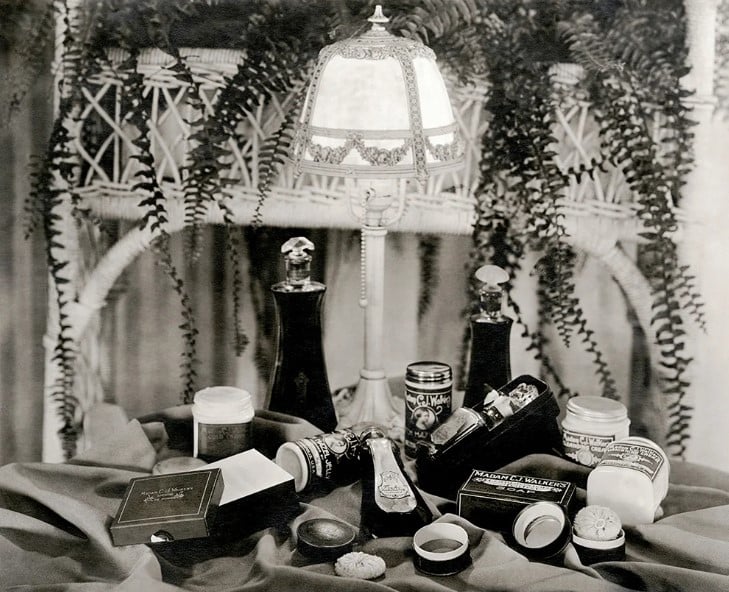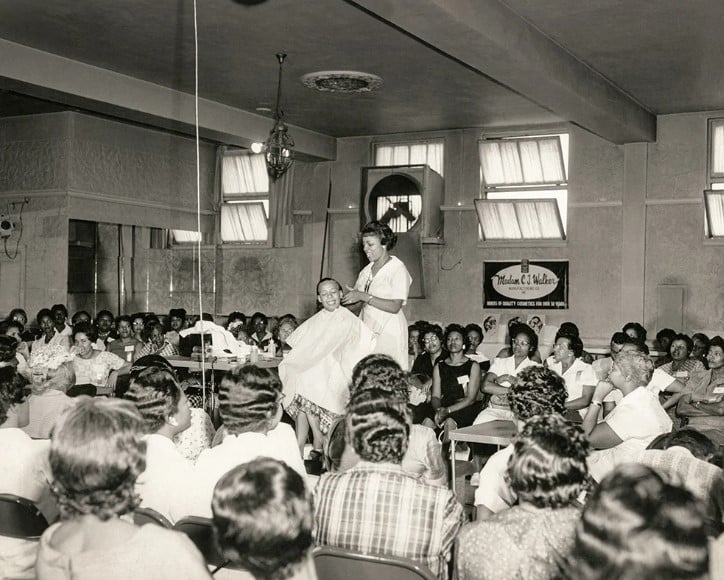Sarah Breedlove Walker’s Incredible Journey To Success: From One Dollar To Million Dollars
Sarah Breedlove Walker aka “Mrs. Charles Joseph Walker”, who was the wealthiest African-American woman in America, declared: “I am a woman who came from the cotton fields of the South. From there, I was promoted to the washtub. From there, I was promoted to the cook kitchen. And from there, I promoted myself into the business of manufacturing hair goods and preparations. I have built my own factory on my own ground.”
Sarah’s words are incredibly inspiring and empowering. They serve as a reminder that with hard work, perseverance, and self-confidence, anyone can achieve their dreams, regardless of their circumstances.
Sarah Breedlove’s Tough Childhood

Sarah Breedlove was born on a plantation in Delta, Louisiana, to parents who had once been enslaved. While the rest of her siblings were enslaved, Sarah was fortunate to be the first child in her family born into freedom after President Abraham Lincoln signed the Emancipation Proclamation. However, her life took a tragic turn at 7 years old when her mother died and her father remarried, she became an orphan toiling in those same cotton fields.
At 10, she moved to Vicksburg, living with her sister Louvenia and her brother-in-law but were abused. To escape her abusive brother-in-law’s household, Sarah made a bold decision at the age of fourteen and married a man named Moses McWilliams. Together, they welcomed a daughter named Lelia, later known as “A’Lelia Walker.” Sadly, their happiness was short-lived as Moses mysteriously died, leaving Sarah to navigate the hardships of life as a young widow and single mother.
Facing Challenges
With Reconstruction coming to an end in the South, Sarah moved north to St. Louis. Some of her brothers had already made the move, working as barbers after leaving the Delta as “exodusters” years earlier.

Sarah faced financial challenges, earning just $1.50 a day as a laundress and cook. Despite these struggles, she was determined to ensure her daughter Lelia received an education, and she managed to make it happen. During this time, Sarah joined the A.M.E. church in St. Louis, where she connected with others in the city, including members of the budding National Association of Colored Women.
Later, in an interview with New York Times, she shared “As I bent over the washboard and looked at my arms buried in soapsuds, I said to myself: ‘What are you going to do when you grow old and your back gets stiff? Who is going to take care of your little girl?’ ”
Beginning in her teens, Sarah suffered severe dandruff and hair loss, possibly due to a condition called alopecia. This was not uncommon within poor communities with frequent illness.
Her great-granddaughter A’Lelia Bundles explains in an essay she posted on America.gov’s Archive: “During the early 1900s, when most Americans lacked indoor plumbing and electricity, bathing was a luxury. As a result, Sarah and many other women were going bald because they washed their hair so infrequently, leaving it vulnerable to environmental hazards such as pollution, bacteria and lice.”
Many Blacks had limited access to proper personal care products, healthy food, and adequate medical treatment. While some accepted their fate as unchangeable, Sarah Breedlove refused it.
The Rise Of Madam C. J. Walker: From Commission Agent To Entrepreneur

During the time of the Louisiana Purchase Exposition in St. Louis in 1904, Sarah’s life took a positive turn when she encountered “The Great Wonderful Hair Grower” created by Annie Turnbo, later known as Annie Malone. Annie was a successful African-American entrepreneur, a millionaire, and the owner of the Poro Company. Sarah became a commission agent, selling Annie Malone’s hair-care products.
While working for Malone, Sarah absorbed new knowledge and used it as a foundation to develop her own line of products. In July 1905, Sarah and her daughter moved to Denver, Colorado. There, she continued to sell Malone’s products while simultaneously building her own hair-care business.
A controversy arose between Annie Malone and Sarah, with Malone accusing Sarah of stealing her formula. Breedlove, however, argued that Black women had been using a combination of petroleum jelly and sulfur for generations.

After Breedlove had split from Malone, she started producing her own pomades and shampoos. It was in Denver where she crossed paths with Charles J. Walker, her second husband, who worked as an advertising professional for the St. Louis Clarion. Charles, a savvy salesman, encouraged her to adopt the impressive name “Madam C. J. Walker” and played a crucial role in creating captivating advertisements to promote her products.
Around the same time, something extraordinary happened. Sarah had a vivid dream that left a lasting impact on her. She recalled, “A big black man appeared to me and told me what to mix up for my hair. Some of the remedy was grown in Africa, but I sent for it, put it on my scalp, and in a few weeks my hair was coming in faster than it had ever fallen out.” It was to be called “Madam Walker’s Wonderful Hair Grower.” Her initial investment: $1.25.
Entrepreneurial Success And Global Expansion

In 1910, Walker relocated her businesses to Indianapolis and established the headquarters for the Madam C. J. Walker Manufacturing Company. She built a factory, a hair salon, and a beauty school to train her sales agents. Additionally, she set up a laboratory to aid in research. Walker hired numerous employees, with many women holding key management and staff positions. By 1917, the company claimed to have trained nearly 20,000 women.
Walker’s grooming method aimed to boost hair growth and improve scalp health with her products. Her system involved using shampoo, a hair-growth pomade, vigorous brushing, and iron combs. It promised to transform dull and brittle hair into soft and luxurious locks.
Outside the factory setting, Walker’s agents focused on selling products door-to-door. They traveled to homes across the United States, offering free samples of “Madam” Walker’s patented hair pomade and other products. These items were packaged in tin containers featuring her image.

By 1913, Walker expanded the distribution of her products to the Caribbean and Central America. She recognized the importance of advertising and building brand recognition. Through extensive advertising in African-American newspapers and magazines, as well as her own travels to promote her products, Walker became widely known across the United States.
In 1917, taking inspiration from the National Association of Colored Women, Walker organized her sales agents into state and local clubs. This led to the formation of the National Beauty Culturists and Benevolent Association of Madam C. J. Walker Agents.

During that summer, the Association held its first annual conference, in Philadelphia, Pennsylvania, attracting around 200 attendees. It is believed to be one of the early national gatherings of female entrepreneurs that provided a platform for discussions on business, commerce, and networking.
During the conference, “Madam” Walker recognized and rewarded the women who achieved the highest sales of her products and recruited the most new sales agents. She also praised those who made significant charitable contributions to their communities.
In the 1920s, after her death, Walker’s name gained even more recognition as her company expanded its market beyond the United States to countries like Cuba, Jamaica, Haiti, Panama, and Costa Rica.
At the time of her death, Walker was considered to be worth between half a million and a million dollars. She held the distinction of being the wealthiest African-American woman in America. Her net worth was in excess of $1 million and as of 2023, it was estimated to be $18 million. According to Walker’s obituary in The New York Times, “she said herself two years ago [in 1917] that she was not yet a millionaire, but hoped to be some time, not that she wanted the money for herself, but for the good she could do with it.”

